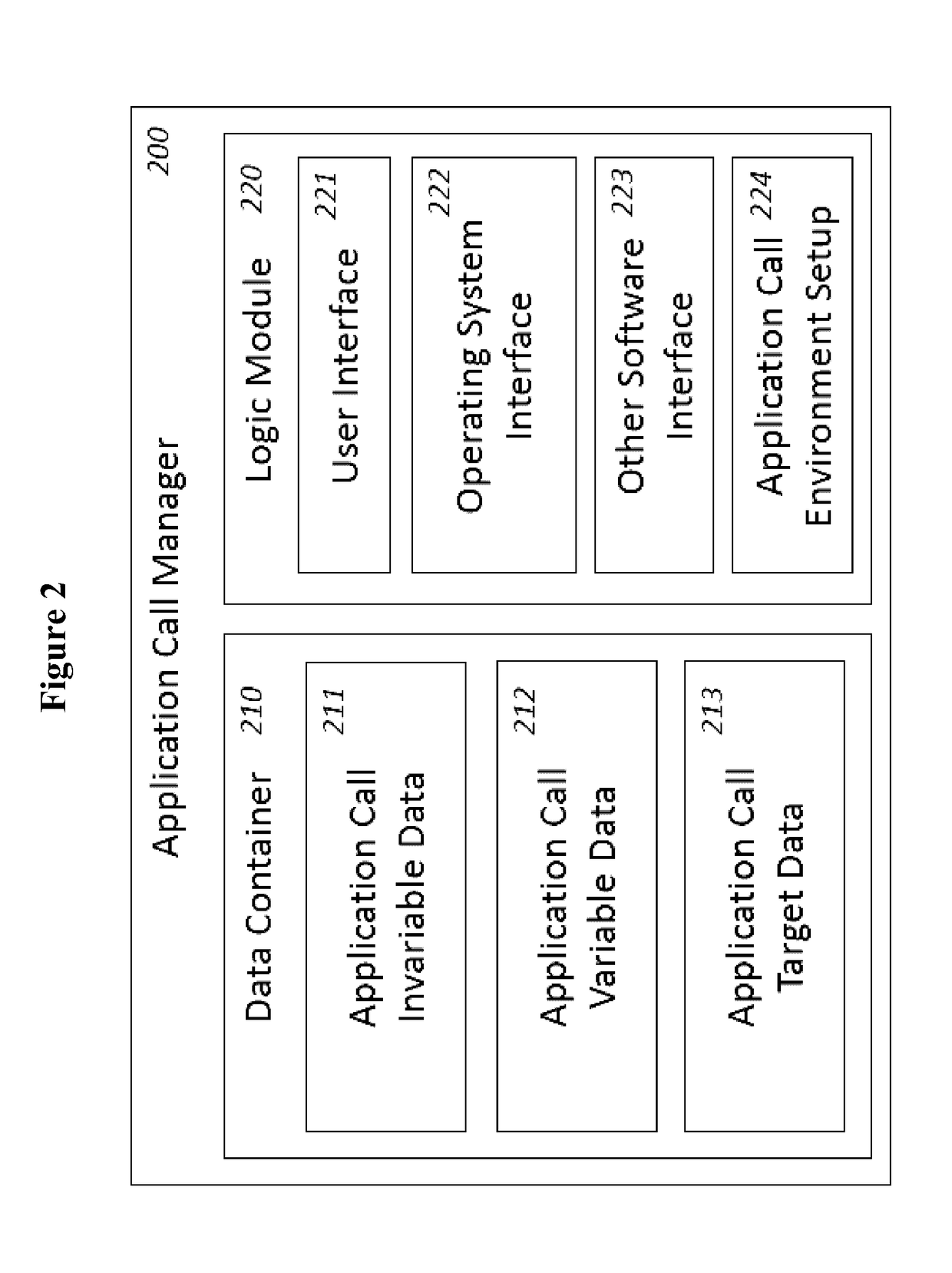Modular Computer Application Development and Usage
a computer application and module technology, applied in the field of module computer application development and usage, can solve the problems of not being popular, both human-computer interaction approaches have limitations in conveying the three types of data to the computer, and direct command input is limited by user's ability to remember and efficiently, so as to facilitate the development of applications, and facilitate the use of applications transparent
- Summary
- Abstract
- Description
- Claims
- Application Information
AI Technical Summary
Benefits of technology
Problems solved by technology
Method used
Image
Examples
Embodiment Construction
[0035]FIG. 1 schematically illustrates an architecture with interaction mechanism among computing resources, users and developers. The figure is used as an embodiment of the present invention.
[0036]The process is better illustrated by starting with the application call manager (ACM) 100. The ACM 100 is a package of logic modules 101 and data container 102 that facilitates the interaction between users and applications.
[0037]An application end user 104, will use the Graphical User Interface (GUI) 103 to interact with the ACM 100. The GUI 103 can be the built-in interface within ACM 100 and / or the interface provided by other software that communicates with the ACM 100. The ACM 100 also has interface with the Local Computing Environment (LCE) 107. The LCE 107 are the software and hardware resources that are locally available to users. The LCE 107 could be but not limited to a personal computer or computers within the same company domain. In addition to exposing computing resources (fil...
PUM
 Login to View More
Login to View More Abstract
Description
Claims
Application Information
 Login to View More
Login to View More - R&D
- Intellectual Property
- Life Sciences
- Materials
- Tech Scout
- Unparalleled Data Quality
- Higher Quality Content
- 60% Fewer Hallucinations
Browse by: Latest US Patents, China's latest patents, Technical Efficacy Thesaurus, Application Domain, Technology Topic, Popular Technical Reports.
© 2025 PatSnap. All rights reserved.Legal|Privacy policy|Modern Slavery Act Transparency Statement|Sitemap|About US| Contact US: help@patsnap.com



